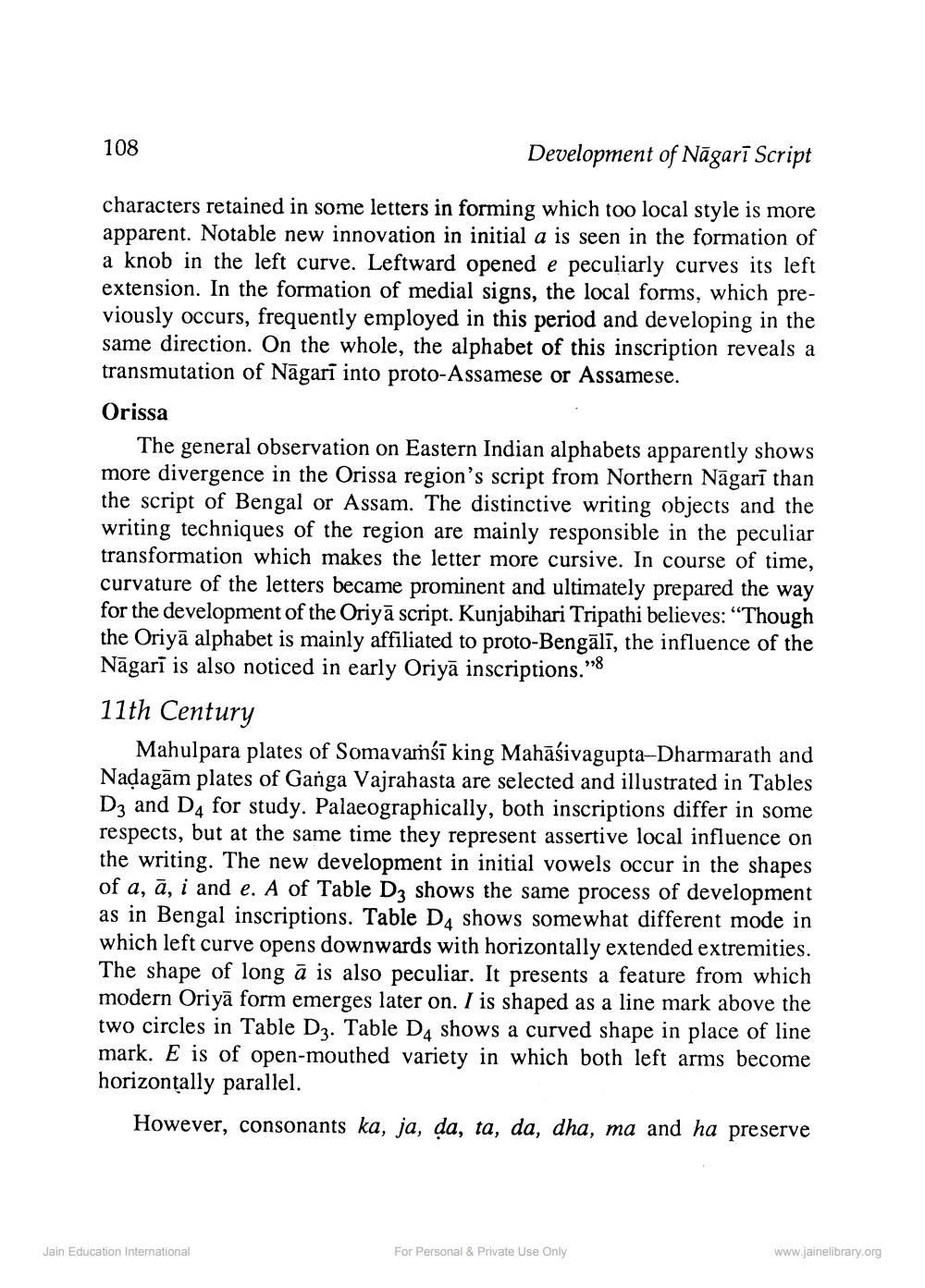________________
108
Development of Nāgarī Script
characters retained in some letters in forming which too local style is more apparent. Notable new innovation in initial a is seen in the formation of a knob in the left curve. Leftward opened e peculiarly curves its left extension. In the formation of medial signs, the local forms, which previously occurs, frequently employed in this period and developing in the same direction. On the whole, the alphabet of this inscription reveals a transmutation of Nāgarī into proto-Assamese or Assamese.
Orissa
The general observation on Eastern Indian alphabets apparently shows more divergence in the Orissa region's script from Northern Nāgarī than the script of Bengal or Assam. The distinctive writing objects and the writing techniques of the region are mainly responsible in the peculiar transformation which makes the letter more cursive. In course of time, curvature of the letters became prominent and ultimately prepared the way for the development of the Oriyā script. Kunjabihari Tripathi believes: “Though the Oriyā alphabet is mainly affiliated to proto-Bengālī, the influence of the Nāgarī is also noticed in early Oriyā inscriptions."
11th Century
Mahulpara plates of Somavamśī king Mahāśivagupta-Dharmarath and Nadagām plates of Ganga Vajrahasta are selected and illustrated in Tables D3 and D4 for study. Palaeographically, both inscriptions differ in some respects, but at the same time they represent assertive local influence on the writing. The new development in initial vowels occur in the shapes of a, ā, i and e. A of Table Dz shows the same process of development as in Bengal inscriptions. Table DA shows somewhat different mode in which left curve opens downwards with horizontally extended extremities. The shape of long ā is also peculiar. It presents a feature from which modern Oriyā form emerges later on. I is shaped as a line mark above the two circles in Table Dz. Table DA shows a curved shape in place of line mark. E is of open-mouthed variety in which both left arms become horizontally parallel.
However, consonants ka, ja, da, ta, da, dha, ma and ha preserve
Jain Education International
For Personal & Private Use Only
www.jainelibrary.org




